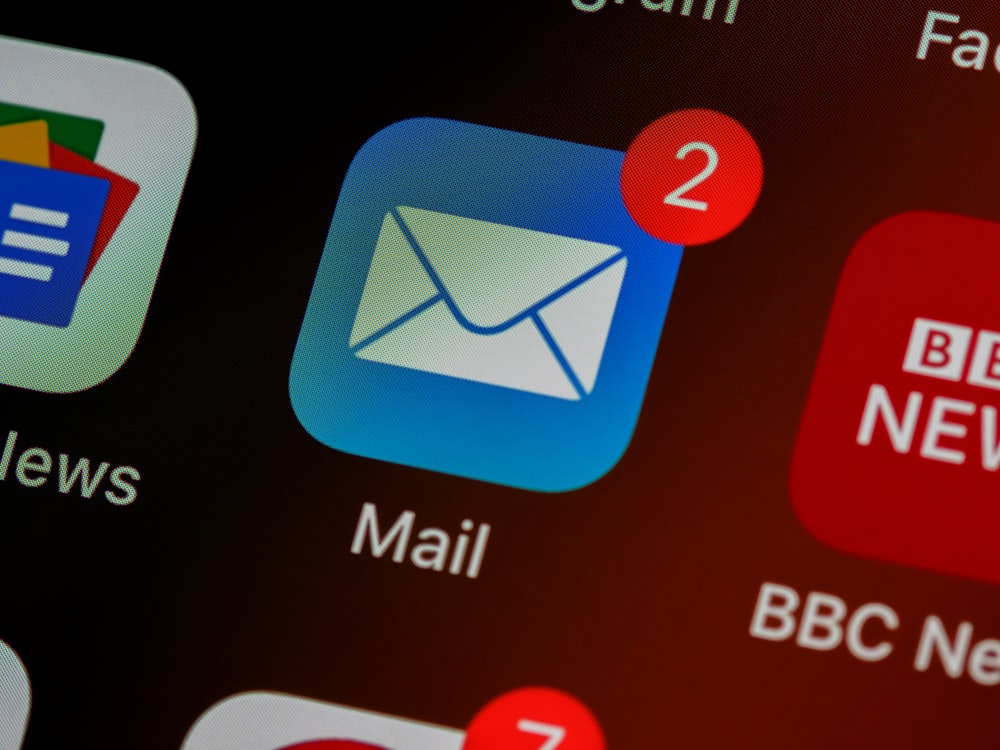Email Frequency and Deliverability: Finding the Perfect Sending Cadence
The age-old question of “how often should we email our list?” isn’t just about maximizing engagement or avoiding unsubscribes—it’s a critical deliverability consideration that directly impacts whether your messages reach the inbox at all. While there’s no universal “perfect frequency” that works for every sender, understanding the relationship between sending cadence and deliverability can help you develop an optimal approach for your specific audience.

The ideal email frequency balances consistency (which helps establish sender reputation) with engagement optimization (which improves inbox placement). Rather than applying a one-size-fits-all approach, the most successful senders implement engagement-based sending frequencies that adapt to individual subscriber behaviors and preferences.
How Frequency Impacts Deliverability: The Technical Connection
The relationship between how often you send and where your emails land is more technical than many marketers realize:
Sender Reputation Development
Mailbox providers evaluate your sending patterns when building your reputation profile:
- Consistency signals legitimacy: Regular, predictable sending patterns appear more legitimate than erratic ones
- Volume stability matters: Sudden, dramatic changes in volume can trigger filtering
- Historical patterns create expectations: ISPs “learn” your typical sending behavior and may flag deviations
- Frequency impacts engagement metrics: Which in turn affects reputation
As a general rule, established sending patterns create a reputation baseline that helps mailbox providers assess whether new messages from your domain are legitimate.
Engagement-Based Filtering
Modern filtering systems heavily weight recipient engagement in their algorithms:
- Engagement decline with frequency: As frequency increases beyond a certain point, engagement typically decreases
- Decreased engagement harms reputation: Lower open/click rates negatively impact inbox placement
- Fatigue increases spam complaints: Overwhelmed subscribers are more likely to mark messages as spam
- Unsubscribes affect future filtering: While preferable to spam complaints, high unsubscribe rates still signal relevance issues

Gmail's filtering algorithm is particularly sensitive to engagement metrics compared to other providers. If you have a high percentage of Gmail subscribers, be especially mindful of how frequency affects your engagement rates with this segment.
The Frequency Spectrum: From Too Little to Too Much
Understanding the consequences of different frequency approaches helps find the deliverability sweet spot:
The Dangers of Infrequent Sending
Sending too infrequently creates these deliverability challenges:
- Reputation decay: Long periods without sending can allow positive reputation to diminish
- Reduced recognition: Subscribers may forget they signed up, increasing spam complaints
- List degradation: Email addresses change or become invalid between sends
- Warm-up requirements return: After prolonged sending gaps, you may need to re-warm your IP/domain
If you send less than once per month, you essentially reset the reputation building process with each campaign, making it difficult to establish the sending history that helps ensure inbox placement.
The Perils of Excessive Frequency
Sending too frequently creates different but equally significant problems:
- Engagement fatigue: Recipients become overwhelmed and stop engaging
- Increased negative signals: Higher frequency typically leads to more complaints and unsubscribes
- Content quality dilution: More emails often means less valuable content per message
- Filtering threshold triggers: ISPs may begin throttling or blocking messages that appear excessive
Declining open rates
Rising complaint rates
Increasing unsubscribe rates
Reduced click-through rates
High hard bounce rates
"Don't remember signing up" complaints
Spam folder placement
Poor sender recognition
Delivery deferrals
Temporary blocks
Throttling by ISPs
Irregular inbox placement
Open/click rate downward trends
Declining read time
Reduced conversion rates
Rising inactive subscriber percentage
Determining Your Optimal Frequency Strategy
Rather than seeking a universal “best frequency,” focus on these approaches to find your program’s sweet spot:
Baseline Frequency Considerations
Start with these general guidelines based on sending type:
Promotional/Marketing Emails
- Minimum recommended: At least once monthly to maintain recognition
- Maximum recommended: 2-3 times weekly for most B2C programs, 1-2 times weekly for B2B
- Consistency factor: Establish a predictable pattern (same day/time when possible)
- Segmentation importance: Very high—frequency should vary by engagement level
Transactional Emails
- Send timing: Immediately following triggering action
- Batching consideration: Avoid batching time-sensitive transactional messages
- Infrastructure separation: Use separate IPs/domains for transactional vs. marketing
- Volume consistency: Aim for consistent daily transactional volume when possible
Newsletters/Content Emails
- Expectation setting: Clearly communicate cadence at signup (weekly, monthly, etc.)
- Consistency importance: Critical—subscribers expect regular delivery
- Value-to-frequency ratio: Higher frequency requires proportionally more valuable content
- Engagement threshold: Watch for engagement drop-offs to identify fatigue
Research across multiple industries shows that the most successful email programs (combining engagement, conversion, and deliverability metrics) typically send between 5-10 emails per month to active subscribers, with frequency decreasing for less engaged segments.
Implementing Engagement-Based Frequency
The most sophisticated approach tailors frequency to individual engagement levels:
Frequency Tiering
Segment your audience by engagement level with corresponding frequency caps:
- Highly engaged (opened or clicked within 30 days): Up to 3-4 emails weekly
- Engaged (opened or clicked within 90 days): Up to 1-2 emails weekly
- Minimally engaged (opened or clicked within 180 days): Up to 2-4 emails monthly
- At-risk (no engagement in 180+ days): Maximum 1 email monthly, primarily re-engagement content
Preference-Based Approach
Give subscribers control over their experience:
- Implement preference centers with frequency options
- Allow subscribers to select content categories
- Enable “snooze” functionality for temporary breaks
- Provide easy frequency reduction rather than only unsubscribe

Testing Frequency for Deliverability Optimization
Systematic testing helps identify the ideal frequency for your specific audience:
Frequency A/B Testing Methodology
Implement these testing approaches:
- Segment testing: Divide a segment into test groups receiving different frequencies
- Holdout testing: Compare metrics between standard frequency and reduced/increased frequency
- Gradual scaling: Incrementally increase frequency and monitor deliverability impacts
- Engagement threshold testing: Identify the point where increased frequency causes engagement declines
When testing frequency changes, monitor not just short-term metrics but longer-term impacts. The negative effects of frequency increases often appear gradually over 30-60 days rather than immediately, while the positive effects of optimizing frequency typically take 2-3 months to fully materialize in deliverability metrics.
Key Metrics to Monitor During Testing
Track these indicators to evaluate frequency impacts:
- Delivery rate: Percentage of emails accepted by receiving servers
- Inbox placement: Percentage of delivered emails reaching the inbox (via seed testing)
- Spam complaint rate: Number of spam reports per emails delivered
- Unsubscribe rate: Percentage of recipients who opt-out after receiving each email
- Open and click rates: Engagement metrics per email and per subscriber over time
- Conversion metrics: Revenue or desired actions per email and per subscriber
- Inactive subscriber growth: Acceleration or deceleration of list disengagement
Finding Your Break Point
Most email programs have a frequency “break point” where negative signals begin to outweigh positives:
- Implement methodical frequency increases in small increments
- Monitor engagement and negative metrics carefully at each step
- Identify the point where total engagement per subscriber begins to decline
- Look for increases in complaints or unsubscribes that exceed normal baseline
- Set your standard frequency below this break point
Special Frequency Considerations for Deliverability
Certain scenarios require specific frequency approaches to maintain deliverability:
New Subscriber Onboarding
During the critical first 30 days after signup:
- Welcome sequence timing: Space initial messages 2-3 days apart
- Engagement emphasis: Focus intensely on generating early engagement
- Gradual increase: Slowly transition from welcome series to regular cadence
- Quality focus: Prioritize high-value content to establish strong engagement patterns
Re-Engagement Campaigns
When attempting to reactivate dormant subscribers:
- Controlled frequency: Limit to 3-5 total re-engagement attempts
- Spacing importance: Allow 5-7 days between re-engagement messages
- Sunset policy: Remove non-responders from regular sending after re-engagement sequence
- Separate infrastructure: Consider using different sending IPs for re-engagement campaigns
Seasonal Volume Spikes
During high-volume periods like holidays:
- Gradual ramp-up: Increase frequency progressively over 2-3 weeks
- Engagement focus: Target higher-frequency messages to most engaged segments
- Infrastructure preparation: Ensure IPs and domains are properly warmed
- Post-season normalization: Gradually return to regular cadence rather than abruptly decreasing

Building Frequency Guardrails into Your Program
Implement these systems to prevent frequency-related deliverability issues:
Frequency Capping Systems
Create technical safeguards against over-mailing:
- Global caps: Set maximum emails per subscriber per week/month
- Category caps: Implement limits by message type or content category
- Dynamic suppression: Automatically suppress recently mailed addresses from new campaigns
- Fatigue thresholds: Create rules that reduce frequency after engagement declines
Frequency Monitoring Dashboard
Build visibility into your sending patterns:
- Track emails per subscriber over weekly/monthly periods
- Monitor engagement rates at different frequency levels
- Compare deliverability metrics across frequency segments
- Create alerts for subscribers approaching frequency limits
Cross-Channel Coordination
Consider email frequency alongside other channels:
- Coordinate email timing with SMS, push notifications, and other channels
- Create cross-channel frequency caps that consider total message volume
- Develop channel preference options that shift communication to preferred channels
- Implement cross-channel suppression rules to prevent message overlap
The most sophisticated email programs have moved beyond simple frequency rules to implement "contact policies" that consider message value, channel preferences, engagement levels, and business priorities when determining optimal sending patterns.
Advanced Frequency Optimization Strategies
These sophisticated approaches maximize deliverability while maintaining appropriate frequency:
AI-Driven Send Time Optimization
Leverage machine learning to personalize sending:
- Analyze individual engagement patterns to determine optimal send times
- Distribute campaigns across hours/days based on personal engagement history
- Predict likely engagement windows based on historical behavior
- Adjust frequency based on predicted engagement probability
Value-Based Frequency Models
Build intelligence into your sending decisions:
- Score each message based on likely relevance to the recipient
- Set minimum value thresholds required for sending
- Increase permissible frequency for highest-value messages
- Skip lower-value messages for less engaged subscribers
Lifecycle-Adjusted Frequency
Adapt sending patterns to customer lifecycle stages:
- Increase frequency during high-interest periods (post-purchase, research phase)
- Reduce frequency during typical low-engagement periods
- Align content type with lifecycle stage and adjust frequency accordingly
- Create special rules for critical lifecycle transitions

Conclusion: The Frequency-Deliverability Balance
The relationship between email frequency and deliverability is not fixed but dynamic—varying by audience, content value, industry, and individual subscriber preferences. Rather than seeking a universal “right frequency,” successful email programs implement:
- Baseline consistency that establishes stable sending patterns
- Engagement-based segments with appropriate frequency tiers
- Preference options that give subscribers control
- Systematic testing to identify optimal cadence
- Monitoring systems that track deliverability impacts
By treating frequency as a strategic variable rather than a fixed rule, you create the foundation for a deliverability-optimized program that respects both your business goals and subscriber preferences. The most successful approach balances the desire to communicate regularly with the technical requirements for inbox placement, creating a sustainable program that maximizes both reach and results.



